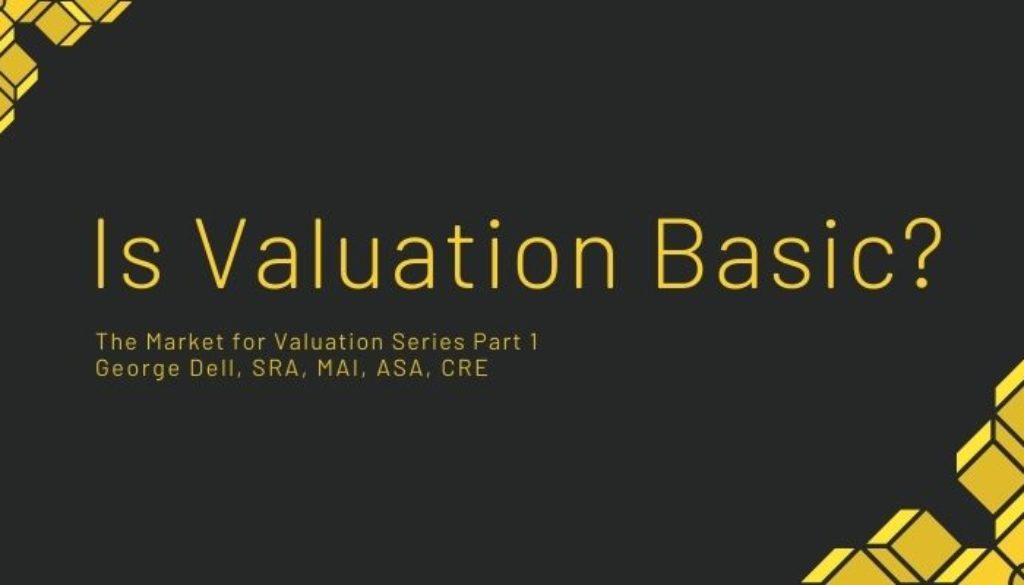Basic sequence of valuation is basic: identify problem, gather the “comparable” data, adjust, and report. Simple. Basic.
The Market for Valuation Series, Part 1
How about AVMs? (Automated Valuation Models). The words are a bit different, but the process is the same: Enter the address, apply the data collect algorithm, apply the predictive algorithms, spit out a number. (Then apply an algorithm to provide an uncertainty measure – often called the FSD (forecast standard deviation.)
How about evaluations, hybrids, bifurcateds, desktops, waivers, broker opinions, assessments, and CMAs (competitive market analyses)? — All the same! The only difference is the depth and attention paid to data collection, validation, model decisions, (data and predictives), and report scope/medium.
So what’s the difference? This is trickier. All are the same and all are different.
And each can be compared at each of the five parts of the valuation process. In more modern terms, the five steps are:
- Form a hypothesis – Identify the problem and formulate a solution path.
- Collect ‘true’ data – Frame sales which fully represent the competitive market.
- Decide predictors – Identify ‘elements of comparison’ buyers consider.
- Apply predictives – Model ‘adjustments’, correlatives, classifiers, and ordinals.
- Deliver report – Communicate a point-price opinion, result, range, or probability function or…
We first consider appraisals and AVMs, then all ‘valuation’ types as they relate to each of the five main parts of the valuation process.
Appraisal. The appraiser:
- Considers preliminary information, including a probable property type, and report format.
- Picks six to ten ‘comps’ believed similar, competitive, and “able to be compared”.
- Applies geographic experience in the area to identify elements to adjust.
- Make adjustments based on ‘experience’ or one of ten adjustments.
- Delivers a written (form, narrative, data stream, or oral) report.
AVM. The vendor:
- Enters the property address. If information cannot be found, it is not a ‘hit.’
- Data selection algorithms are computer applied. Programs are as programmed.
- Geographic similarity algorithms are computer applied, as originally programmed.
- Predictive algorithms are computer applied and may include adjustment “formulas”.
- Delivery is a single market price number, and any certainty estimates and other risk data.
Everything else.
As this is a larger topic than can be covered in a one-page blog, we will start part 1 with step one, the hypothesis. This is an assumption, assertion, or preliminary reckon of what it is the problem. It involves the “subject of the assignment and its relevant characteristics” (USPAP Scope of Work), including related property interests.
In coming blogs, we will consider each of the above five steps of valuation, as they are reflected in each of the several valuation constructs we have today. As an example, how the subject is identified is quite different for appraisals and for AVMs, and for other non-appraiser valuations.
These distinctions affect the reliability, cost, and speed of what each product produces…
